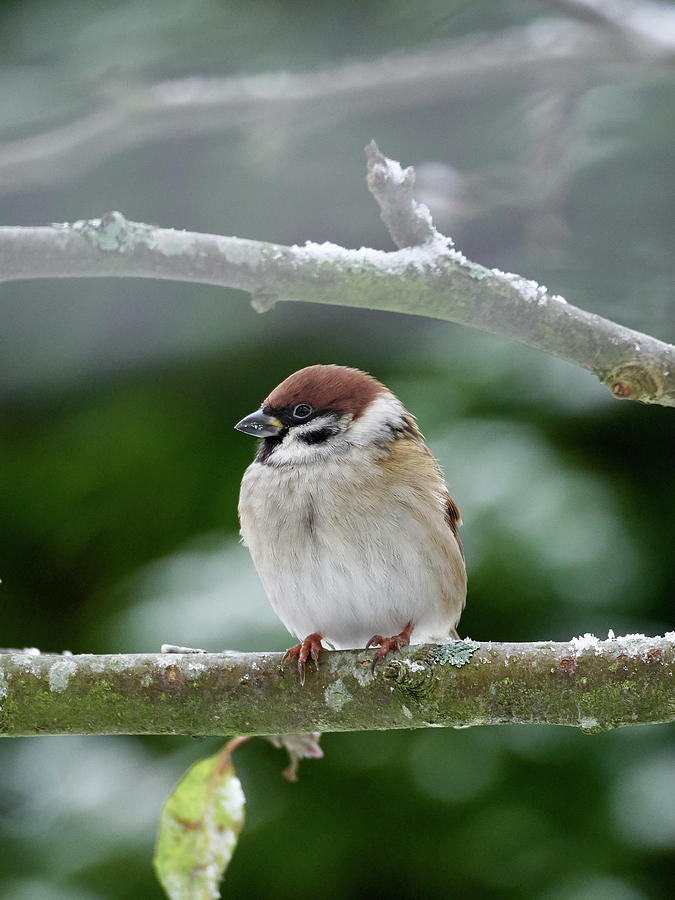
We predicted that (1) BRAM would have a higher V mr and a better flight efficiency to meet the time- and energy- minimization of migration (Alerstam 2011) (2) TRSP would flight at a higher V max to achieve better maneuverability for local competition and anti-predation, with a lower flight efficiency (Askew and Ellerby 2007). We compared the differences in flight speed and energy efficiency between two passerines with a resident species ( Passer montanus, Eurasian Tree Sparrow, TRSP) and a migratory species ( Fringilla montifringilla, Brambling, BRAM). To test the hypothesis that migrants would enhance the energy efficiency at V mr, and residents would have high V max to improve maneuverability (Chernetsov 2012). Therefore, passerines are under more selective pressures of optimizing flight speed and energy consumption (Gavrilov 2011 Vincze et al. Passerines (Passeriformes, Aves) are typically featured with flapping flight that have higher power requirements than those birds with other flight modes (e.g., soaring, gliding). Measuring the vertical speed, acceleration during load-free flight trials, and power margin (the excess available aerodynamic power for vertical ascent) can evaluate the maneuverability of birds (Altshuler et al.

The minimal flight energy cost at a certain distance (Distance × P fight/ V mr, i.e., power cost per 100 km per unit body mass) can provide a framework to investigate the airborne energy consumption of transport. Specifically, V mr is calculated with flight-related morphology and optimized kinematics V max is the maximal flight speed supported by maximal available output power in load-lifting flight trials (Pennycuick 2008). By measuring flight-related morphology, kinematics, and maximum weight lifted during maximum load-lifting flight trials, we can calculate aerodynamic power output with aerodynamic model and estimate flight speed ( V mr and V max). The maximum load-lifting capacity experiment (as imposed via asymptotic loading) is a quantifiable way to determine maximum flight performance and estimate maximum power available during the flight in volant animals (Marden 1987 Altshuler et al. By contrast, residents are less constrained by the energy demand of long-distance flight, and a higher maximum speed ( V max) can improve chasing and escaping ability (Clemente and Wilson 2016, Fig. Theoretically, small migratory birds should fly at speed with the maximum range speed ( V mr) and maximize the efficiency of flight to meet the strategy of energy-minimization during the flight (Hedenström 2002 Tobalske et al. 2018), little information is available on how migratory birds adjust airspeed and mechanical power relative to residents.Ĭonsidering that power consumption follows a U-shaped relationship with flight speed, fly at a speed too low or high than usual will demand an extra amount of energy and lower energy efficiency (Alerstam et al. Given that it is difficult to directly measure these parameters under the natural conditions (Zhao et al.

For example, migratory birds not only have highly efficient wings (more prolonged and narrower wings, lower wing loading) but also exhibit lowered wingbeat frequency and stroke amplitude for continuous flight avoiding additional parasite drag relative to residents (Minias et al. 2005 Hedenström 2008), migratory birds have evolved a suite of modifications in wing morphology and kinematics in terms of energy consumption for long-journey flight than residents (Hedenström 2008 van Oorschot et al.

According to the theory of migration syndrome (Bauchinger et al.

Our results suggest that adaptation for migration may have led to reduced power output and maximum speed to increase energy efficiency for migratory flight while residents increase flight speed and speed range adapting to diverse habitats.įlight performance is a fundamental factor for fitness in ecological and evolutionary contexts (Webster et al. The BRAM had a significantly lower maximum speed, lower power at any specific speed, and thus lower flight energy cost in relative to the TRSP although the two species had a comparable maximum vertical speed and acceleration. The BRAM had longer wings, higher aspect ratio, lower wingbeat frequency, and stroke amplitude compared to the TRSP despite the two species had a comparable body mass. We studied the differences in morphology, flight kinematics, and energy cost between two passerines with comparable size, a migrant ( Fringilla montifringilla, Brambling, BRAM), and a resident ( Passer montanus, Eurasian Tree Sparrow, TRSP). Unlike resident birds, migratory birds are generally believed to have evolved to enhance flight efficiency however, direct evidence is still scarce due to the difficulty of measuring the flight speed and mechanical power.


 0 kommentar(er)
0 kommentar(er)
